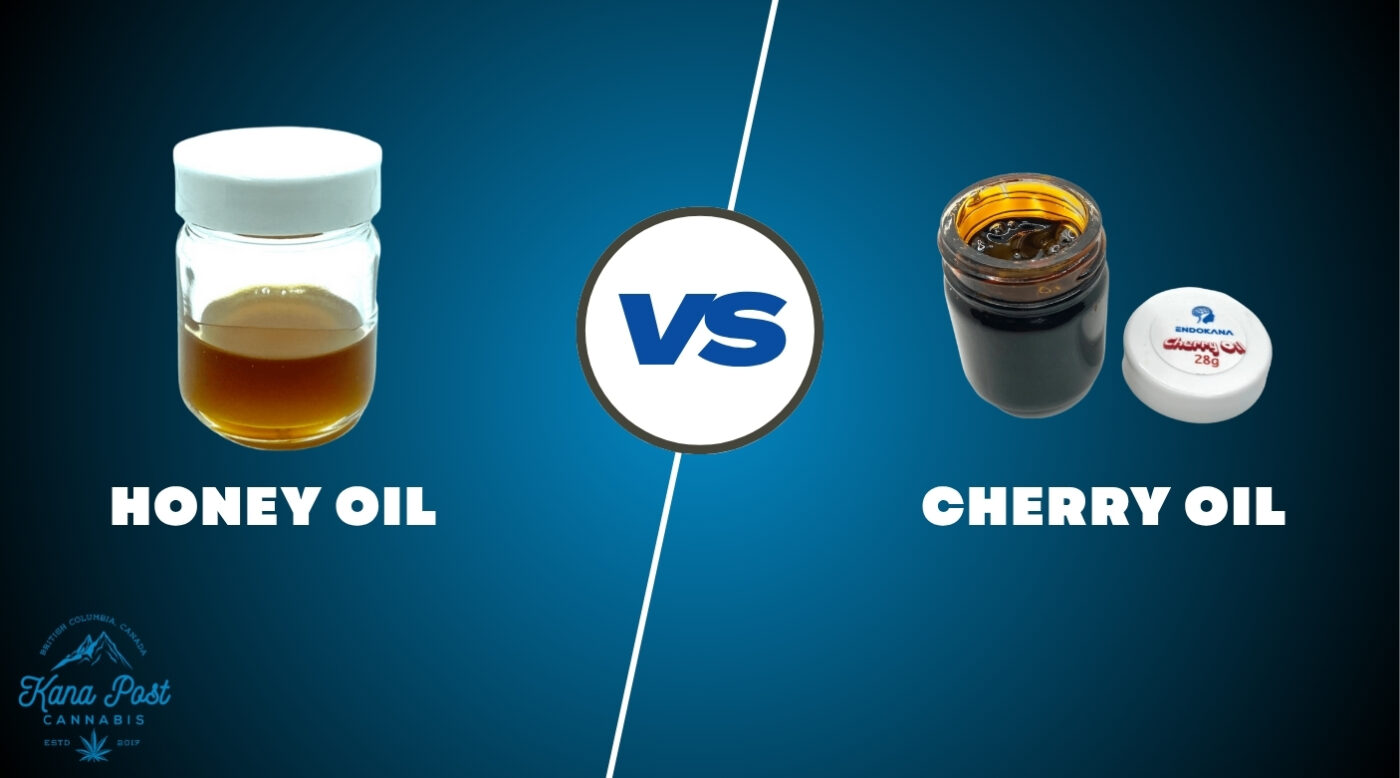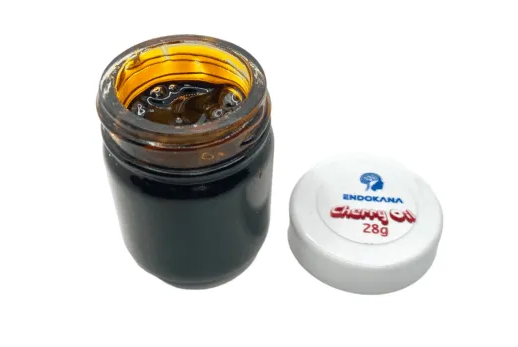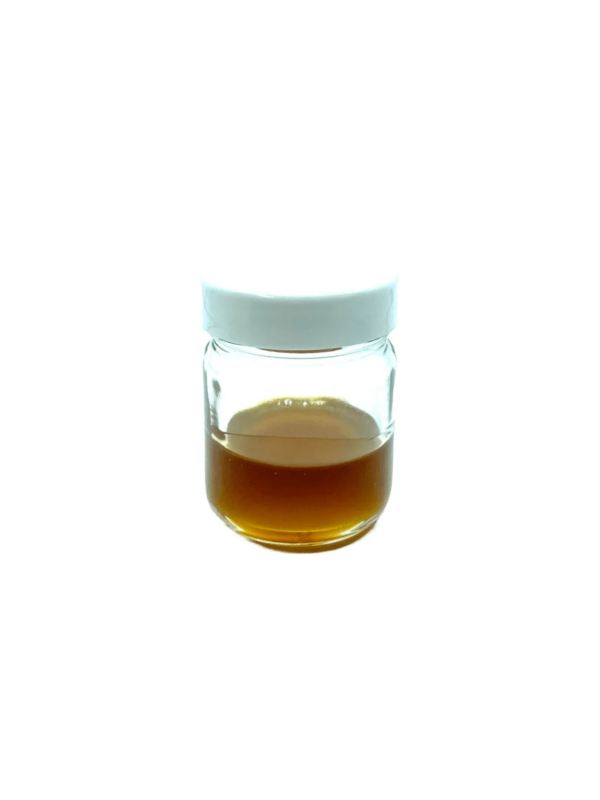Uncategorized
Cherry Oil vs Honey Oil | Effects, Uses & Best Choice for You
Cherry oil is milder, darker, and great for relaxed daytime use. Honey oil is stronger, smoother, and better for dabbing, cooking, or intimacy.
If you’re comparing cherry oil and honey oil, you’re probably trying to figure out which one actually fits your routine. Both look similar, both hit harder than a flower, but they don’t feel the same, they don’t taste the same, and they definitely don’t work the same in every situation.
What Is Cherry Oil?
Featured Product -> Cherry Oil Jars
Cherry oil is a dark, red-amber extract made using butane or alcohol. It’s usually around 65–70% THC, which makes it milder than honey oil but still far stronger than traditional flower.
What makes cherry oil stand out is the flavor, it’s got this earthy, slightly sweet profile that seasoned users really appreciate. Some even say it reminds them of the old-school hash oils from back in the day.
Some people use cherry oil for topicals, too, It blends well with DIY balms and creams for localized pain relief, especially when paired with the right carrier oils.
What Is Honey Oil?
Featured Product -> Premium Honey Oil Jars
Honey oil is a golden cannabis extract that hits harder and faster than most. It usually sits between 75–85% THC and is often what regular users reach for when flower doesn’t do the trick anymore.
Some people call it hash oil, BHO, those are the same thing. The big draw here is potency. It works fast, whether you’re dabbing it, vaping it, or adding it to edibles. Some even apply it directly to the skin with a carrier oil.
The flavor is smoother than cherry oil, it leans more floral than earthy, and that makes a difference depending on how you’re using it.
Cherry Oil vs Honey Oil: Key Differences That Matter
If you’re choosing between cherry oil and honey oil, here’s what you need to know.
- Color-wise, cherry oil leans dark, think deep red, and almost like a syrup. Honey oil has that golden amber look most people associate with high-quality extracts.
- The THC content of cherry oil usually hits around 65–70% THC. Honey oil runs stronger, often between 75–85%. So if you’re chasing a heavier hit, honey oil wins there.
- The Flavor of cherry oil brings a bold, earthy profile. You’ll notice it right away when vaping or adding it to a joint. Honey oil hits smoother, with a light floral touch.
You should use cherry oil during the day or when you still want to stay social. Honey oil hits harder, so it makes more sense for evenings or if you’re using it for relief.
Common Uses for Cherry and Honey Oil
For smoking, just add a bit to your joint or bowl. It kicks your flower and burns smoothly if you don’t overdo it.
If you’re into dabbing or using a vape pen, both oils work well. Honey oil runs smoother in rigs, especially for people who want that full hit without too much harshness.
You can also eat cherry oil, mix it into butter, brownies, pasta, or even tea. Without heat, the THC won’t activate right, and that’s where most people mess up.
Topically, both oils can be mixed with a carrier oil and used for pain or sore muscles. Cherry oil blends well in homemade balms. It’s a favorite for DIYers looking for something stronger than a store-bought rub.
How Cherry & Honey Oil Compare to RSO, Distillate, and Phoenix Tears
RSO (Rick Simpson Oil) is known for being used by medical patients, especially those dealing with serious conditions. It keeps everything from the plant: cannabinoids, fats, and chlorophyll.
- Distillate is different, it’s stripped down to just the THC or CBD. No taste, no smell, just raw potency, often hitting 95–99% purity. It’s used in vape carts, edibles, and capsules when you want zero flavor and full punch.
- Phoenix Tears is the same thing as RSO. People use the names interchangeably, but it’s the same unfiltered full-spectrum oil.
- Honey oil, on the other hand, keeps the terpenes. It’s cleaner, smoother, and it still has the natural flavor and aroma of the strain it came from.
- Cherry oil sits in its lane, like RSO, it’s full-spectrum, but it has that sweet, earthy taste and a looser texture. It’s easier to work with and better suited for smoking or edibles than something as thick as RSO.
Which One Is Better? It Depends on Your Needs
Go with cherry oil if you care about flavor and want something smoother to manage. It gives you a relaxed high without hitting too hard. If you’re someone who gets anxious with high THC, cherry oil is easier to work with.
Pick honey oil if you’re after something stronger. You’ll feel the effects quicker and need less to get there. It’s ideal for dabbing, vaping, or when you’re dealing with pain or trouble sleeping.
Ready to Try the Oil That Does It All?
If you’re comparing cherry oil vs honey oil, chances are you want something strong, smooth, and versatile, without the harsh aftertaste or confusing labels.
We built Kana Post for people like you, experienced smokers, dabbers, and edible makers who want quality that doesn’t waste your time or money. You want something clean, potent, and ready to use however you like. That’s what we deliver.
Here’s what to check out:
👉 Bulk Honey Oil Jars: Clean hits, consistent strength, and smooth flavor. These fan favorites sell fast because they actually work, whether you’re dabbing, cooking, or applying.
When you’re ready to stop wasting money on mid-tier extracts, Kana Post has your back.
Why Honey Oil Stands Out
Honey oil hits harder, tastes cleaner, and works across the board, joints, dab rigs, edibles, topicals, you name it. You can warm it up and mix it into your food, or blend it into a carrier oil for a massage. Some people even ask what’s best for intimate use.
If you’re buying in bulk, it makes sense to go with something that stores well. Honey oil holds up better over time compared to cherry oil or distillate.




